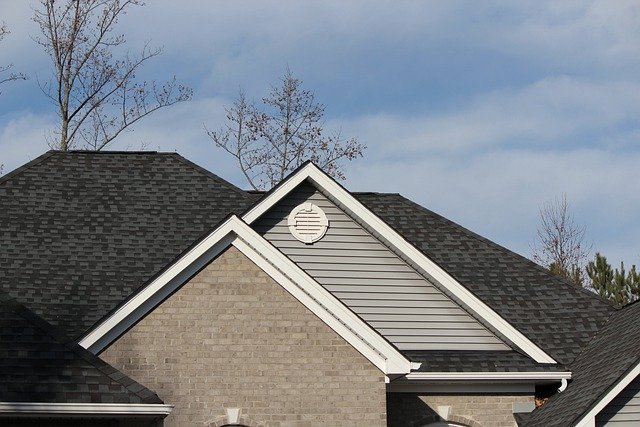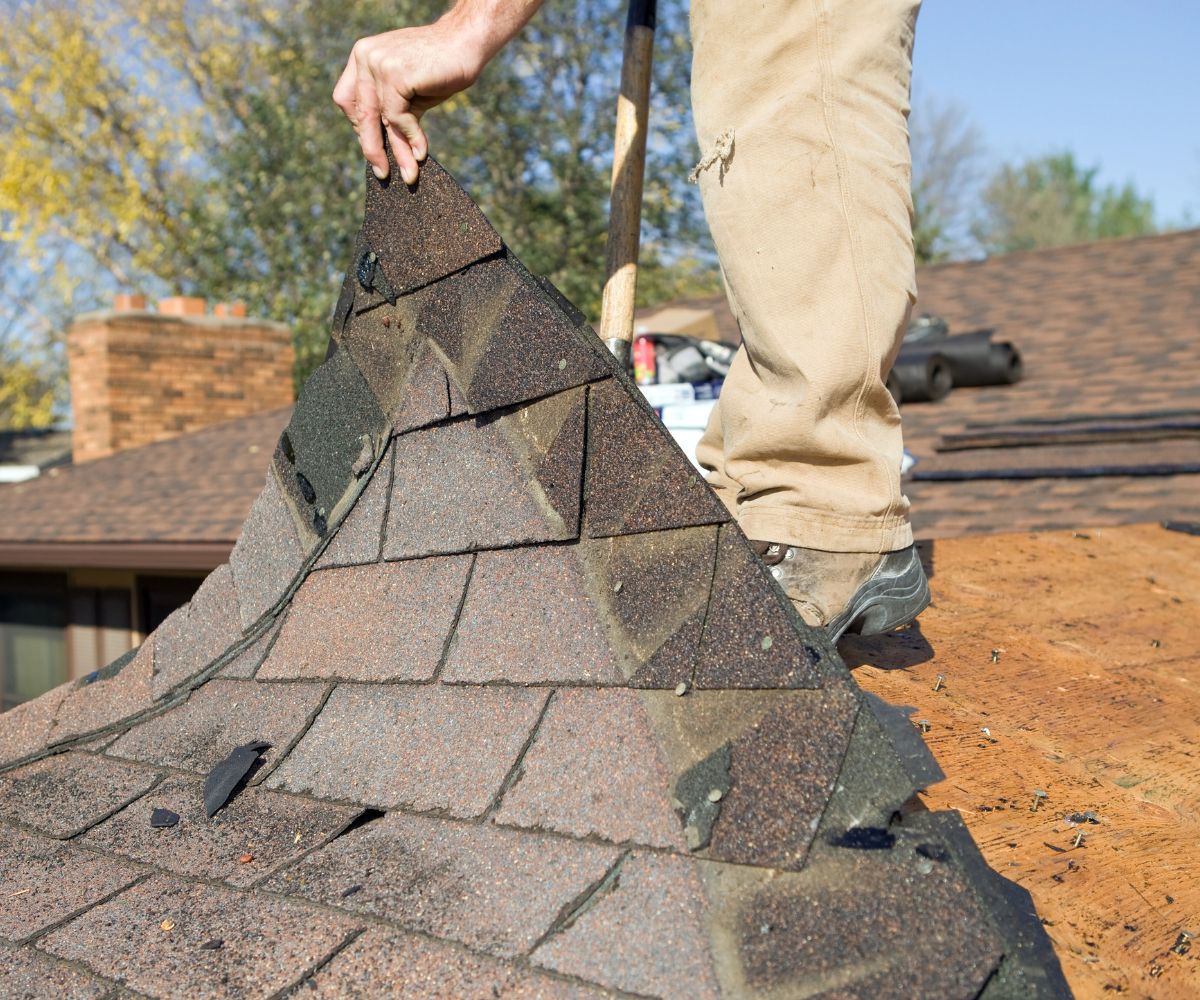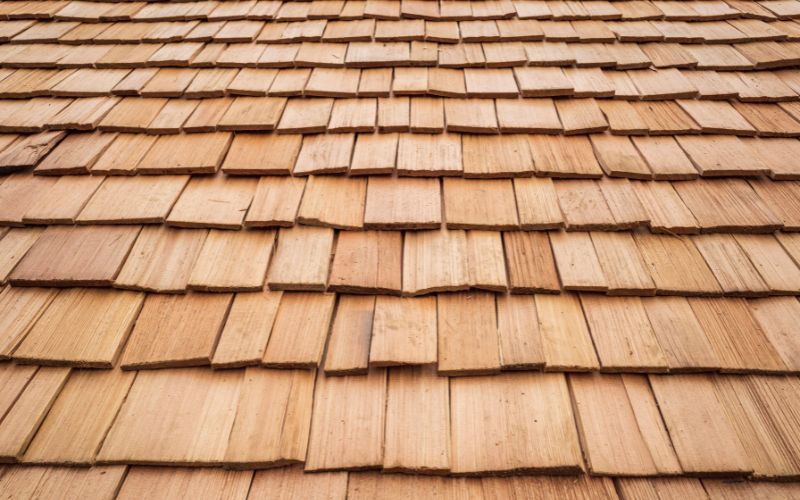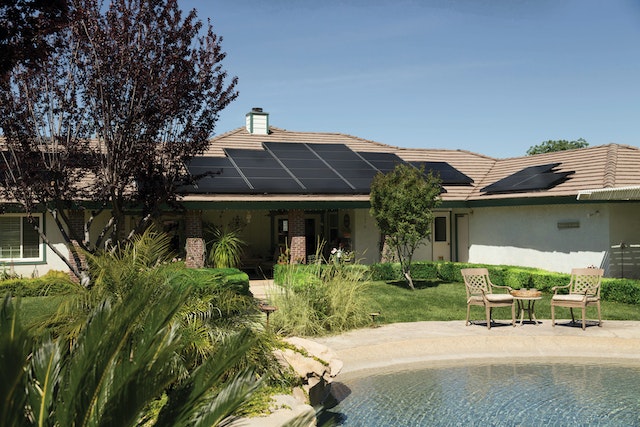The cost of replacing your roof is a significant commitment. How many layers of shingle can you have? Since it is such a significant investment, many homeowners look for opportunities to cut costs wherever they can.
One of the ways that this is accomplished is by nailing over their existing asphalt shingle roof, even if there are already two layers of shingles on their existing roof. If you are living in California and are concerned about your roof’s lifespan, you may wonder how many layers of shingle you are allowed to have under the California roofing laws.
How many layers of shingle can you have on your roof?

Only asphalt shingles allow for the reuse of older shingles as a roof covering for newer ones. You cannot build a fresh layer on top of different types of shingles. An example is laying asphalt shingles over cedar shakes, as they are both incompatible with one another.
If you want to place new shingles on top of older ones, the older roof needs to be in reasonably excellent condition first. This is likely the most crucial rule to follow while doing so. Installing new shingles over a damaged or leaky roof won’t help.
Installing an extra layer of shingles has advantages and disadvantages:
Advantages of overlaying shingles
Having two rows of shingles on your roof provides certain benefits. For example:
1.Double protection
Having two layers of shingles protects the roof from the weather even more effectively. This way, damage caused by missing or blown-off shingles following a storm is mitigated when multiple layers of shingles are used.
The roof’s existing underlayment would serve as a shield against weathering. If placed correctly, it will effectively seal off any potential leaks.
2.Cost efficiency
Removing and replacing a roof costs more than a simple replacement. Putting new shingles over old ones is more cost-effective. It’s also costly to pay for the removal of the old shingles before installing the new ones.
3.Warranty
If the roof is correctly installed by the same manufacturer after an inspection, you may be eligible for a reroofing guarantee.
4.Saves time
Installing a new roof takes more time and effort than repairing or replacing an existing one. This is because of the need to remove the old roof and then prepare the deck for the new shingles. Evidently, taking down the old shingles and replacing them with new ones is a time-consuming process.
Disadvantages of overlaying shingles
Adding another layer of shingles is a good idea, but it does come with some drawbacks that you should be aware of.
1.Uneven surface
When put on smooth, level surfaces, shingles not only function well but also look great. They might not stick well enough to each other when mounted on top of each other, or they might get damaged by the weather.
2.Damage proneness
It is possible that the roof may become more vulnerable to leaks and damage if new shingles are installed on top of an already existing roof. This is also the case if the underlayment and deck are nailed all over again. These extra openings increase the risk of roof leaks, which can harm the roof and the house below.
3. Expensive repair

Roof repair expenses often fall into two categories: labor and waste removal charges. With so many broken shingles, fixing the roof is a dangerous proposition. As a result, you need to remove both layers of shingles, roofing repairs will be more expensive.
To check and repair the underlayment and roof sheathing, it may be necessary to remove large sections of the roof. The damage caused by removing the layers extends to the roof deck and underlayment. These may have to be replaced.
4.Roof value
Some customers are reluctant to have a double shingle roof built on their property due to worries about the potential increased cost of upkeep and roof replacement. Some roofs can’t be made to look better by adding more layers of roofing material. An inspection report can raise worries about the roof’s durability regardless of how pretty it is.
5. Heat damage
There is a lot of breathing room in a pitched roof due to the large gap between the roof deck and the rafters. This area stores heat for gradual, regulated release using natural heat loss and roof vents like turtle or ridge vents.
A double layer of shingles prevents heat from escaping the attic and reduces heat gain from the sun. The result is increased AC operating expenses, which ultimately affect the homeowner.
6. Damage assessment
 Putting new shingles on top of an old roof may not be as easy as it sounds.You may need to rip off a part of the roof to evaluate the underlying framework for damage and make repairs.
Putting new shingles on top of an old roof may not be as easy as it sounds.You may need to rip off a part of the roof to evaluate the underlying framework for damage and make repairs.
7. Warranty
Roping firms may decline double roofing if it creates an unnecessary risk or worsens previous roof concerns, such as overloading. It’s likely that damage to a roof with two layers won’t be covered by insurance due to manufacturer policies.
When there are two levels of roofing, it can be difficult to determine which one was damaged in the event of a leak. Because of these factors, it’s probable that the damage reimbursement won’t be paid.
8. Building codes
It is imperative that building codes change in tandem with technological developments and the introduction of new roofing solutions. A construction permit may be required before you can begin placing the new layer of shingles over the existing roof. You’ll need to be sure you follow the new roofing laws that apply to your home or face punishment.
Examples of such circumstances could be:
- Water and ice shielding materials, for example, must meet stringent requirements for their application.
- A current report on the application of materials with a certain wind rating band.
Your contractor should, of course, be up to speed with local roofing laws and the requirement for any permits. It’s important to note that, while lower prices may be attractive, it’s not worth the risk of hiring any ‘cowboy companies’ – the last thing you want to do is go through the process of suing for property damage.
Is it better to overlay your old shingle roof or just replace it?
Before having a layover on your roof, you need to consider whether it would be right for you before you make any costly mistakes. You should also see that you are in compliance with the law’s regulations on doing so.
The roof is meant to take specific loads
In all likelihood, there is a maximum recommended load for your roof, accounting for the possibility of snowfall, as well as the shingles. Additions made on top of a structure only serve to weaken it more due to the added weight.
If you add another layer of shingles to your roof, you may be exceeding the capacity of the surface area of the roof. Consequently, the roof may crumble in, and if that happens, your house may collapse.
Low slope roofs are ideal for shingle installation
Shingles are not designed to cover irregularities in the roof. Even the stepped appearance that results from overlapping shingles is included.Even though some roofers have unique ways for placing new shingles over old ones, they nevertheless curl or cup.
In turn, these flaws will propagate across the next layer. If you opt to re-layer your roof, laminated or dimensional shingles are the way to go because they are thicker and feature staggered edge profiles. These help to cover any high spots or dips in the original roofing.
The decking underneath cannot be inspected without tearing it off
The condition of the decking underneath the roof cannot be assessed without first tearing it off. A qualified roofer will do a walking inspection to look for soft spots and other issues. Then, before they replace the roof entirely, they can focus on fixing specific areas that need it.
You should be wary of hiring a roofer who skimps on this step. Consequently, any damage to your roof could potentially seep through the new roofing shingles.
California Roofing Laws: How many layers of shingles can you have?
| Standards | Law |
| Section 1510 | Reroofing: Rooftop structures |
| Section 1509.7 | Photovoltaic systems |
| Section 1511.1 | Existing roofing |
| Section 15010.3 | Roofing terms |
| Section 1505.1.1 | Fire safety |
| Section 1510.4 | Roof covering |
A roof must meet the standards set out in Chapters 7A and 15, as well as the California Building Energy Efficiency Standards. All specifications for a new roof must be in accordance with the guidelines laid down in Section 1510.
Reinstallation of a photovoltaic (PV) system on a roof that was removed for reroofing must also adhere to the standards set out in Sections 1509.7 and 1511.1. These are discussed further in the article. All roofs must have a roofing assembly that meets listing and manufacturer installation standards.
Roofing terms:
The Building Official may waive the provisions of Section 15010.3 and allow the existing roof coverings to remain if the inspection reveals the following:
- The roof’s framework is sturdy enough to support a covering the roof.
- The roof deck has not deteriorated and is structurally good.
- The current configuration is not saturated in water.
- The new roofing material meets all requirements for the current roof pitch and location-specific fire risk assessment classification.
- The new roofing material has been approved by a reputable organization for installation. It should match the actual field conditions with the current roof covering.
- Wood shingles, asphalt shingles, and any other roofing material don’t exceed a single layer.
- The current roof is fastened safely to the deck.
California law reroofing terms
For preexisting roofs constructed with mineral aggregate, all loose gravel, debris, and embedded aggregate protruding more than 1/8 inch must be swept off the roof. Any bumps, bulges, or other imperfections must be trimmed, glued, or nailed flat.
The roof can be reinstalled on the newly prepared deck surface. Nails for the roof must be long enough to go at least three-quarters of an inch into the sheathing or through half an inch of plywood.
The law on wooden shingles and shakes

The state of California has an ongoing measure put in place due to fire hazards that prohibit reroofing with wood shakes or wood shingles stated in Section 705 A.2. The standards of Section 1505.1.1 must be met when reroofing a building in the Very High Fire Hazard Severity Zone.
Regardless of the classification of the Fire Hazard Severity Zone, the use of wood shingles or wood shakes is strictly forbidden. Installing asphalt shingles over existing wood shingles is allowed with or without a solid sheathing or plywood base. This is provided that the regulations on how to do so are followed.
Wood shakes shall be completely removed before reroofing unless the material complies with the exceptions noted in Section 1510.3. Section 1510.3 states that new roof coverings shall not be installed without first removing all existing layers of roof cladding down to the roof deck where any of the following conditions occur:
- In cases when the current roof or roof covering has become water damaged or has deteriorated to the point that it cannot serve as a solid foundation for new roofing.
- Where wood shake, slate, clay, cement, or asbestos-cement tile are currently installed.
- When there are already two or more layers of roofing material on the roof.
Exceptions:
- There shall be no requirement for the removal of existing roof coverings when installing a new, complete and distinct roofing system. An example is a standing-seam metal roof system, that is designed to transmit the roof loads directly to the building’s structural system.
- Roofing materials such as metal panels, metal shingles, and concrete or clay tiles may be put directly over an existing wood shake roof if the roof is prepared in compliance with Section 1510.4.
- No tear-off of the current roof coverings is required prior to the placement of a new protective coating over an existing spray polyurethane foam roofing system.
What if I have solar panels on my roof?

There are laws governing how to go about if you have a rooftop-mounted photovoltaic system. If you have these on your roof and would like to reroof, you will need an extra permit for their reinstallation. You will also need the permit to reroof.
A C-39 licensed contractor must execute the reroofing, while a C-10 or C-46 licensed contractor must reinstall rooftop mounted solar systems, per the requirements of the Contractors State License Board. For systems that have already been approved, reusing Weeb clips is not allowed.
The following licenses are also required of you:
- Fees for reviewing building plans and obtaining necessary permits (BL) before roofing replacement can begin.
- A miscellaneous permit issuance fee (MP) alone, with “reinstallation of current rooftop mounted solar system due to reroof” as the job description.
How to go about reinstalling rooftop-mounted photovoltaic systems
If plans for a previously installed rooftop-mounted photovoltaic system are available, those should be used for the reinstallation. If they are not available, the contractor is required to provide images and/or videos of the current photovoltaic system prior to removal and initial inspection.
Images must be clearly distinguishable for the installation process to work properly. They must present at least the following details:
- model, quantity, and position of PV modules
- The varying sizes and shapes of conductors, cables, and conduit
- Attachment of rack to modules
Frequently Asked Questions
The maximum number of layers of asphalt shingles that should be installed on your roof is two. Remember that if you have more than two layers, you really ought to think about replacing your roof. However, if you only have one layer and are looking for ways to save costs, a nail-over might be something to consider.
Before you go and lay new shingles on top of the old ones on your roof, there are a few things you need to be aware of first.
1. If you have an asphalt shingle roof installed, you won’t be able to take advantage of the most comprehensive warranties.
2. The flashing on your current roof must be used.
3. Your roof decking can’t be inspected
4. Changing from 3-tab to architectural shingles might be aesthetically problematic.


